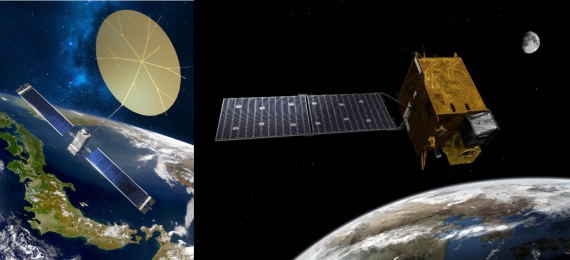
On February 18, 2020 at 10:18 PM (UTC) an Arianespace Arian 5 rocket successfully lifted off from the Guiana Space Centre in French Guiana with its payload of two satellites, both of which were successfully deployed into orbit within 35 minutes of liftoff.
The deployed satellites were the JCSAT-17, a Japanese communications satellite, and GEO COMPSAT-2B, a Korean satellite that will be monitoring environmental data.
JCSAT-17
Built by Lockheed Martin, this communications satellite will operate in geosynchronous orbit and maintain position above the 136 deg E longitude line just east of Japan. It’s owned by Tokyo-based Sky Perfect JSAT and will provide communications in a variety of radio frequency bands, primarily to a number of other commercial telecommunications companies which will then provide services in Japan and the East Pacific region.
The satellite was by far the more massive of the two launched, coming in at just under 5,900 kg (2950 2L soda bottles), and sports a unique 18 meter wire mesh antenna for S-band communications.
The satellite will use chemical bi-propellant thrusters to reach GEO altitude and to maintain its position and orientation while in that orbit. It carries enough fuel to continue operation for more than 21 years, although the satellite is stated to have a planned 15+ year mission lifetime.

GEO KOMPSAT-2B
The smaller of the two satellites is an Earth observation satellite built by Korea Aerospace Research Institute (KARI). It has a mass of a bit less than 3,400 kg (1700 2L soda bottles) and will operate in GEO at 128.2 deg E longitude and will monitor sea and ocean data throughout the Asia-Pacific region. Like JCSAT-17, it uses chemical thrusters to maintain its attitude and orientation and is planned to operate for at least the next 10 years.
This satellite includes a spectrometer built by Ball Aerospace, which is being billed as the first air quality sensor to operate in geostationary orbit and will take hourly measurements of air pollution, including ozone and nitrogen dioxide, in order to improve early warnings for potentially dangerous pollution events.
According to a statement by Byung-Seon Jeong, South Korea’s vice minister of science and information and communication technology, “We believe that GEO-Kompsat 2B will be an invaluable asset serving various environmental issues of humankind, especially addressing particulate matter in East Asia. The air and ocean environmental data from GEO-Kompsat 2B is expected to significantly help many people (with) breathing concerns and minimize the damage from marine disasters.”
The satellite is meant to work side by side with GEO KOMPSAT-2A, which was launched aboard an Ariane 5 back in 2018. While 2B is specifically focused on the oceans and air quality monitoring, 2A is a dedicated weather satellite, much like the GOES satellites are for North America.
More Information
- JCSat-17 (Rocket Launch Live) https://www.rocketlaunch.live/launch/geo-kompsat-2b
- Press kit (English): https://www.arianespace.com/wp-content/uploads/2020/02/VA252-launchkit-EN2.pdf
- Ariane 5 deploys communications and environmental monitoring satellites




 Join the Crew!
Join the Crew!
 Escape Velocity Space News
Escape Velocity Space News
0 Comments